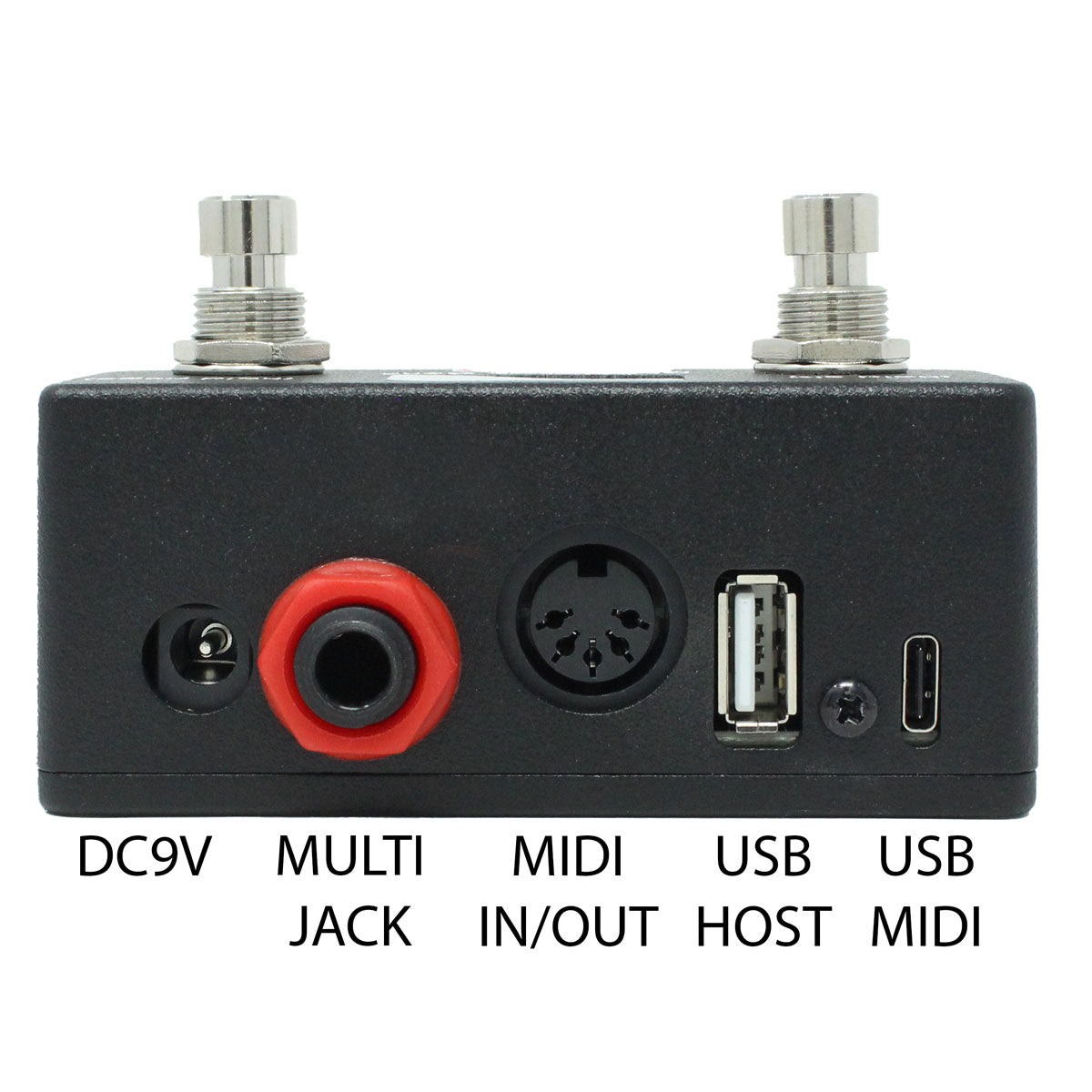SKU:DA-DMCMG4
Disaster Area Designs
Disaster Area Designs DMC.Micro Gen4
Disaster Area Designs DMC.Micro Gen4
Out of stock
Couldn't load pickup availability
The DMC.micro Gen4 is the first in a new generation of MIDI controllers. Featuring all of the features of the previous DMC.micro Pro and DMC.micro Classic, with a vastly improved USB controller and a dual-core 32 bit processor, the DMC.micro Gen4 is maximum MIDI in a minimum footprint.
Overview:
The DMC.micro Gen4 uses our advanced MIDI technology in a tiny package – just 3.6″ x 1.5″ x 1.6″ (93 x 38 x 42mm.)
The DMC.micro user interface is incredibly simple – tap the left or right buttons to perform an action, hold the left button to perform a third “alternate” action, or hold the right button to advance to the next “page.”
The DMC.micro Gen4 can access up to eight pages, whose functions may include:
Device Control: Program select and bypass for up to four devices.
Utility Mode X: User-set actions on left / right / alt buttons.
Utility Mode Y: User-set actions on left / right / alt buttons. This mode is also assignable to looper controls for the Strymon Timeline, Eventide H9 / Timefactor, HX Stomp / Effects, or Line 6 M9/M13.
Preset: Stores programs from Device Control pages and allows the user to change multiple devices at once.
Clock: Control the DMC.micro Gen4’s built-in MIDI clock generator
Web-based editor: Completely configure the entire controller, set preset names, re-order presets, import and export controller settings.
Features:
Graphical OLED display shows preset names, device status, clock rate, and more.
One MultiJack connector can function as Expression Pedal input, Tap Tempo Output, Function Switch Output, Footswitch Input, or MIDI Output.
Internal DIP switches to customize MultiJack functions.
Up to 99 user-accessible presets (if preset page is active.)
Controls up to four MIDI devices
User-definable Utility Mode X page sends any MIDI CC command, MIDI notes, bank up and down, more.
New Utility Mode Y page adds additional user-defined commands or use as looper control mode
USB Type-C port for power, USB MIDI, or firmware updates
USB Type-A port for dedicated USB MIDI HOST, connect to most class-compliant USB MIDI devices
Runs on 5V USB or standard 9V power, 40mA or higher
The DMC.micro Gen4 also features our astounding MultiJack connector, which can perform several different functions to simplify your setup!
Connect one or two 1/4″ MIDI devices from companies such as Alexander Pedals, Chase Bliss Audio, Empress, and Meris
Functions as a bi-directional MIDI port for supported devices, allows connections for Meris pedals to editing software.
Connect an expression pedal to send MIDI messages to one or more of your devices, or user-define a custom MIDI CC expression command.
Connect an external one- or two-button footswitch for tap tempo control, or user-define two custom actions.
Send tap tempo to an external device such as a DD-7, Panther Cub, Flint, and more.
Need more control? Use the USB port to interface with your computer or tablet device and turn the DMC.micro into a USB MIDI controller. Maybe you have a Zoom MultiStomp (MS-50G / MS-60B / MS-70CDR?) or a newer Red Panda pedal? Connect it to the USB Host port to control it just like a normal MIDI device.
Want to interface your DAW or tablet to your pedalboard wirelessly? Connect a CME Widi Bud Pro to the USB Host port for bi-directional MIDI communication over Bluetooth.
You can even chain multiple MIDI controllers together through the USB Host port, to create one seamless integrated control station.
Specifications:
Size: 3.6″ x 1.5″ x 1.6″ (93 x 38 x 42mm.)
5-pin MIDI Port (supports MIDI input with MIDI-Y cable)
MultiJack
USB port
Controls up to four MIDI devices
Power: 9V DC, 40mA or greater, center negative (not included) OR USB 5V, 100mA
Graphical OLED display
Soft-touch footswitches
Preset, device, looper, and UTIL modes
Manufacturers and Safety Information
MAS Distro Europe Ltd
Mulrakin
Y35 E1X0 Bridgetown
Ireland
info@masdistro.com
www.masdistro.com
Specific safety instructions applicable to the product can be found in the user guide.


Subscribe to our emails
Be the first to know about new collections and exclusive offers.






